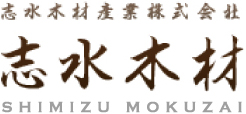Taking Care of your Sushi oke
(wooden container for sushi),
Handai, or Ohitsu (wooden container for rice)
The Sawara used in making the sushi oke and Handai is resilient to water and highly durability.
Handling it with care will surely increase your product’s lifespan.
Please use it as follows in order to extend its useful life.
(If there is a possibility of over-drying, please leave a little water in it.)
Before using it for the first time
Please remove the wood resin from the sushi oke.
Put water into the oke and add approximately 35ml to 55ml of vinegar and stir.
(Water that has been used to wash rice is can be used instead of rice vinegar)
Once two to three hours have passed, rinse the product before using.
(You can use it without removing the wood resin from the sushi oke, however this may cause the rice to have a harsh after-taste during the first use)

Before everyday use
Please use it after wiping with a lightly wet dish towel.
Our products remain unaffected by the odor or color of the food, and the utmost effort has been made to prevent blackening.

Care of after use
Please rinse it out with hot or cold water, wipe off the moisture and dry the product.
When using detergent please use a neutral kitchen detergent.

Other cautionary notes
-
1
Please do not leave water inside for long periods of time as this may cause mold or corrosion.
-
2
While drying, there may be a slight leakage of water, however after around 10 minutes have passed since putting water in, the wood will expand and there will no longer be any leakage.
-
3
Please note that direct sunlight and the wind or hot air of air conditioning and heating
equipment will cause the surface to dry rapidly, causing cracks and deformations.
When resin leaks out
Resin is unique to coniferous wood; volatile coniferous trees which contain a lot of sap (used to protect the tree from the onset of rot and bind fibers) are constantly breathing.
Even after the product is finished, the wood will continue to breathe, and when the temperature and humidity increase, evaporation will occur.When emitted sap has nowhere else to go, it solidifies on the surface of the product and turns into resin.
If the resin occurs, please soak the product in hot water to soften the resin and wipe with alcohol.If medical alcohol is unavailable, beverages high in alcohol content such as whiskey can be substituted,however, please note that higher alcohol content will make removing resin easier.
While some stains may remain, the stickiness can be removed cleanly.

With continual use the product has gradually become dark.
Unfortunately, unpainted wood products can’t retain their original color.
We are often asked how many times the product will turn black, however the speed at which it changes color depends on water quality (the amount of iron in the water) in the customer's vicinity.
When bleaching blackish, dull, wooden products, firstly lightly wet the product water and scrub with a scrubbing brush and lemon juice.
Because of the bleaching effect of lemon, the product’s appearance will be considerably improved.
(Please use raw lemon, and refrain from substituting with lemon extract as this will not have the same effect.)

If the hoop of sushi oke has come off
Wood expands with high humidity and shrinks when the atmosphere is dry. Therefore, the hoop may loosen with the low level of humidity in winter.
If the hoop loosens or comes off, turn it upside down, fit it to the product, and strike it with a hammer while place a Kamaboko plate on top of the hoop so as to avoid scratching the product with the hammer.
If you re-affix the hoop to the groove and rinse it with water, the hoop will tighten again.

If mold forms
Mold spores are constantly floating in the indoor air.This floating spores land on every surface in the room, and it will breed if the following requirements are met: ① the availability of nutrition (including dust), ② temperature (20 to 35 ℃), ③ oxygen, ④ humidity (70% or more).
Mold should be removed early and not be allowed to take root; its spread should be prevented.
If mold has only just begun growing (only on the surface), you can remove it simply by wiping it off.
If the mold has taken root, please use sandpaper and scrape the roots off.
If the roots are deep and can’t be removed easily when scraped with sandpaper, you can kill the hyphae of the mold with chlorine bleach after some scrapping.However, please note that discoloration as a result of mold which remains even when killed will cause a large loss of aesthetic appeal.While using a product discolored by mold is still safe, we recommend dealing with the problem as soon as possible.

Contact
We sell sushi okes, Handai, Hangiri, okes, wood baths, and other manufactured wooden products.
Please feel free to contact us about any repairs or any other concerns.



